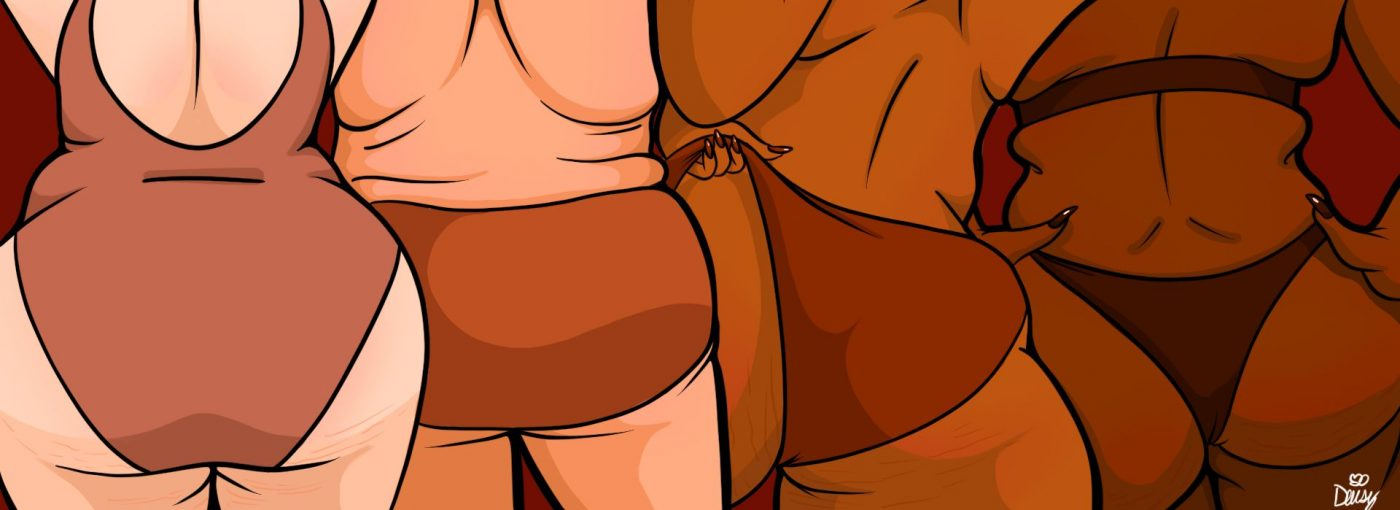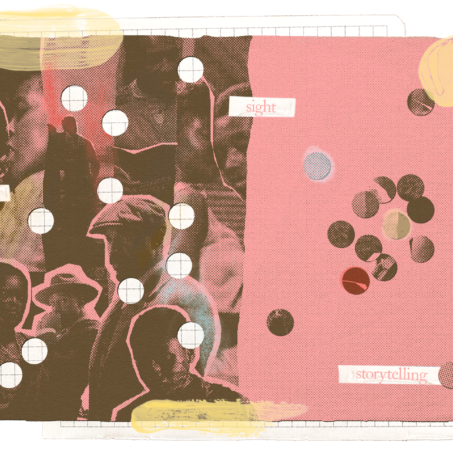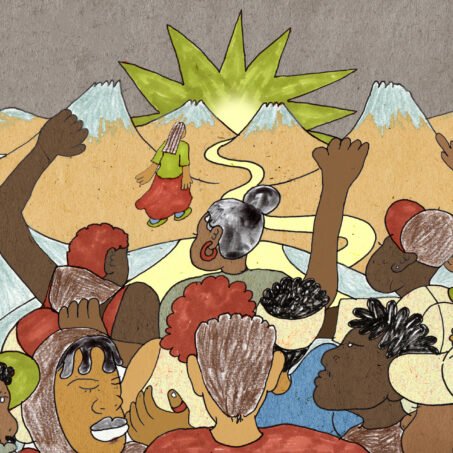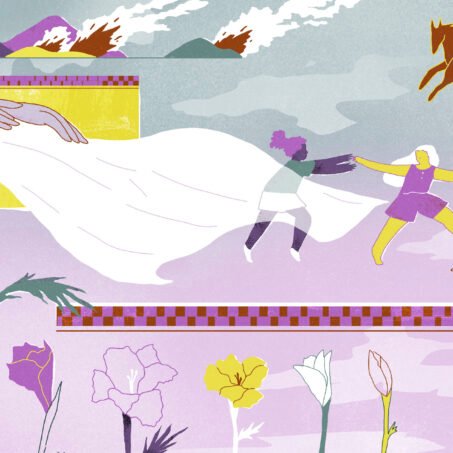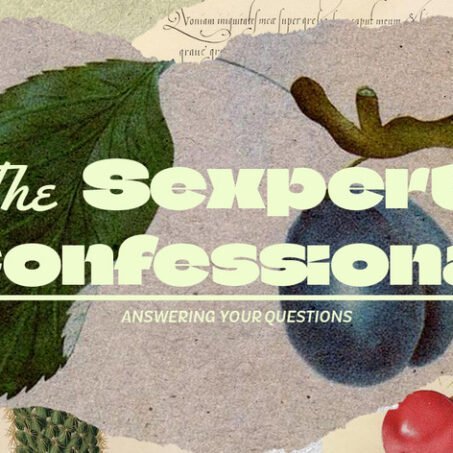When the body positivity movement emerged on the scene in 2012, the language surrounding bodies – particularly those belonging to fat, Black women – changed drastically. Gone were the size 0 waistlines and airbrushed complexions teetering down runways and dominating magazine covers; in came what finally felt like reality being represented, providing a well-deserved pedestal on which marginalised bodies could finally stand proud.
However, greater visibility has meant that, in turn, fatphobic language is virtually inescapable. It’s everywhere, from being frequently seen littering the comments underneath posts from fat folk or being spouted by personal trainers on breakfast talk shows. The furore displayed does very little to hide their disgust, which is in itself deeply problematic. However, labelling such remarks as simply offensive seems reductive once fatphobia’s racist and colonialist roots are revealed.
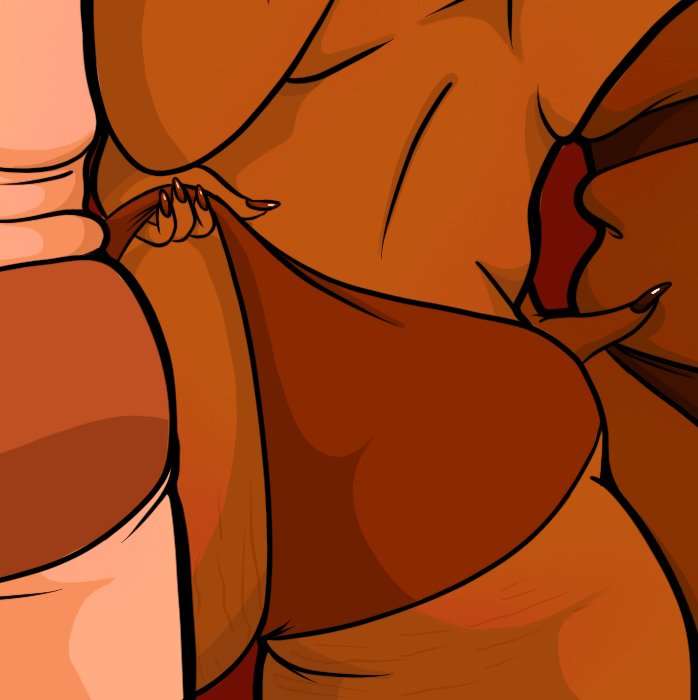
The objectification and hypersexualisation of fat bodies is a well-known, sinister element of the slave trade. Born in 1789, Saartjie Baartman, also known as Sarah Baartman, was born in a small village in Cape Town. Baartman was 20 years old when she was brought to London by William Dunlop, a doctor who was then travelling on-board a British ship. Being forced to leave her home behind, Baartman unsuspectingly became what Dunlop referred to as a “money-making venture”. Baartman suffered from a disease called steatopygia which resulted in a build-up of fat, the majority of which was focused on her buttocks and upper thighs. This, in the eyes of Dunlop, was justification enough for Baartman to be showcased in a human zoo, paraded around and scrutinised purely to entertain the crowds of European onlookers.
When Baartman died on the 29th of December in 1815, her life as a commodity did not end. Instead, her brain, skeleton and sexual organs continued to be displayed in a Parisian museum until 1974, and were only repatriated and buried in 2002. Even in death, Baartman was regarded as a commercial possession and remained in the custody of colonialism, her purpose to exclusively satisfy the curiosities of those more fortunate.
This approach towards Baartman is echoed today in the misunderstanding and mishandling of bigger bodies in healthcare practises. Coined by Belgian mathematician Adolphe Quetelet and reinvented in 1972 by physiologist Ancel Keys, the Body Mass Index – or BMI, as it’s more commonly known – works against bigger bodies just like Baartman’s. Conceived of using only white, European men as test subjects and regurgutated by yet another white man over a century later, this scale overlooks womxn, and others that don’t fall within Quetelet’s sample group. Continuing to use BMI as an indicator of someone’s health – particularly womxn and people of colour – when they were never included in the original analyses is inherently racist, and potentially dangerous when providing effective medical treatments.
So often, slim-bodied users of the internet look at larger bodies and decide – based solely on their appearance – that they are unhealthy, or actively promote an unhealthy lifestyle. Active figures in the plus-size community such as Jessamyn Stanley are constantly chastised online, simply for refusing to live their lives hating their perfectly healthy bodies; fatphobia refuses to believe that being fat, happy and healthy is possible. The idea that non-medically trained onlookers can determine an individual’s health exists to serve those in a privileged position, and condones outdated and discriminatory practises.
Fatphobia itself – although more noticeable now thanks to social media – is not a new concept. Written by Sabrina Strings, associate Professor of Sociology at the University of California, Fearing the Black Body: The Racial Origins of Fat Phobia explains how prejudices towards fat folk have existed for centuries. In the 18th century, French philosophers noticed how those from different races behaved, and how their body shapes apparently reflected their tendencies. They labelled Africans as “sensuous” people, claiming that “they love sex and they love food” which was what led them to be fat. In order to distinguish themselves from these folk and prove their ‘self control’, they actively strived to be slender, monitoring their food consumption and proving their racial superiority in doing so; eating and a person’s body size became a way to determine how worthy of freedom an individual was.
If this sounds familiar, it’s because elements of this mindset have trickled down into the present day – we just now know it as diet culture. This archaic way of measuring someone’s worth, desirability and beauty based on how fat they are harks back to the colonialist mentalities of the 18th century. You only have to look at the majority of 2020’s highest paid models to see how being thin, white and beautiful still works in your favour. Prejudiced attitudes towards bigger bodies constantly label them as lazy and even unprofessional, going as far as decreasing the likelihood of a fat person being hired for a job. With this in mind, it’s hard to dispute the toxic nature of fatphobia and the wider implications it may have on already disadvantaged communities.
In order to fight against fatphobic actions, we have to reconsider the language we use on a daily basis. Learning that ‘fat’ and ‘ugly’ are not synonymous is key, as well as unlearning the preconception that being fat makes you unhealthy. Where possible, we must make a concerted effort to call out and educate people when they default to anti-fat behaviour, and highlight how this toxic ideology is more than just skin deep. Without doing this, we can never truly call our feminism intersectional, proclaim that we stand against racist structures or move towards a more inclusive society.
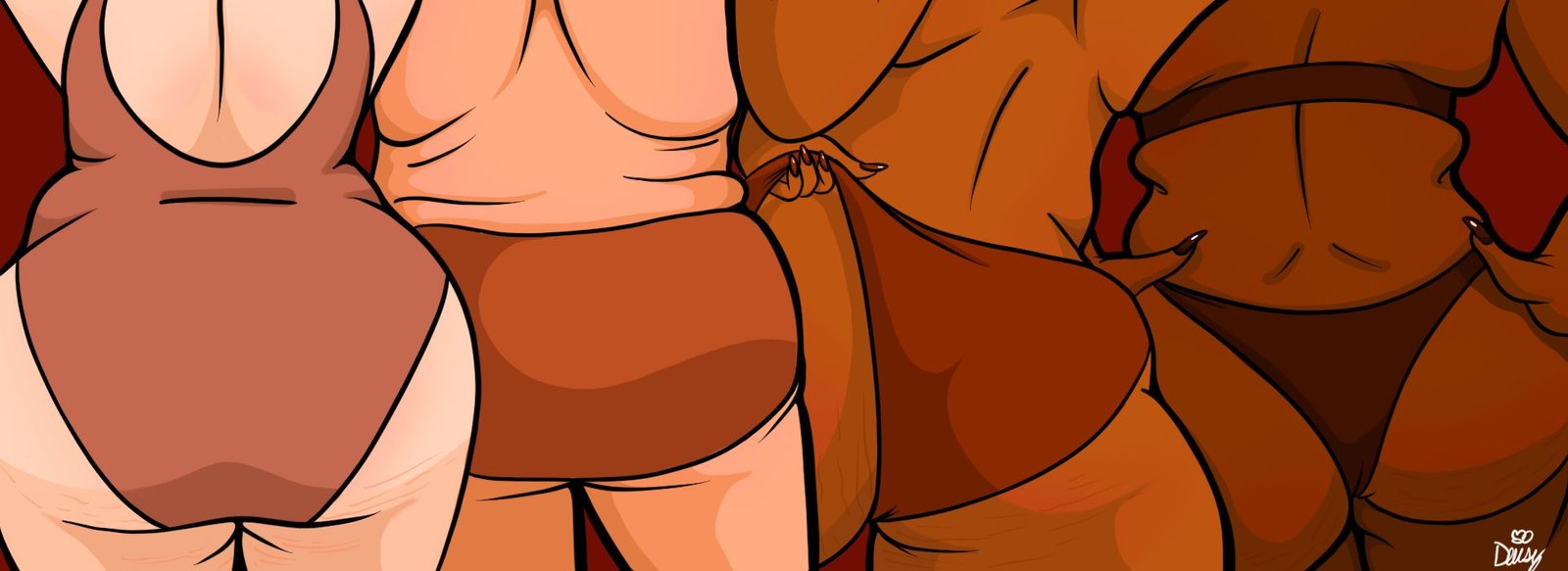
See more of Daisy’s work on instagram

